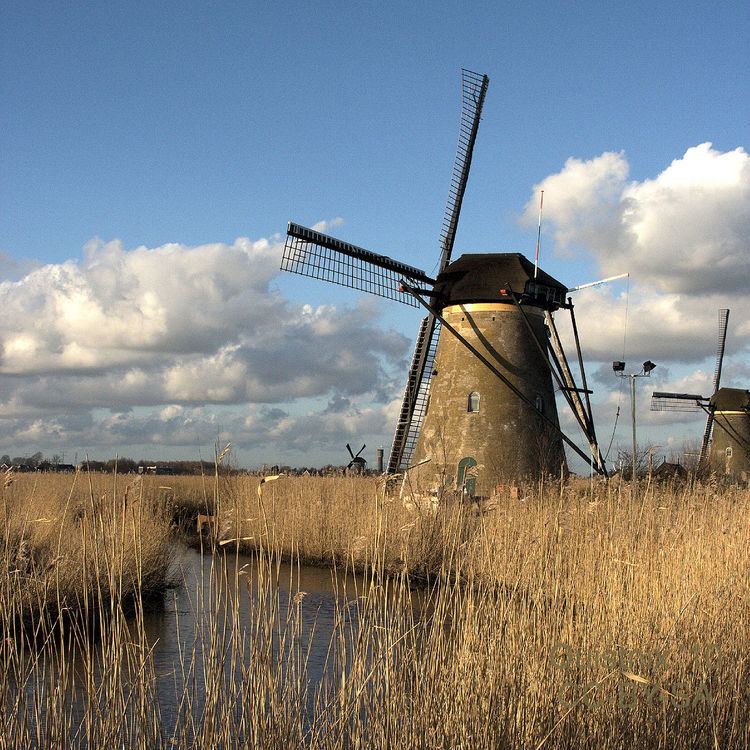Location Netherlands Criteria i, ii, iv Inscription 1997 (21st Session) Phone +31 78 691 2830 | Type Cultural Reference 818 Province South Holland | |
 | ||
UNESCO region Europe and North America Address Molenkade Nederwaard 1, 2961 AS Kinderdijk, Netherlands Similar IrDF Woudagemaal, Noord, UNESCO World Heritage, Stelling van Amsterdam, Museummolen Blokweer | ||
Viking cruises walking tour of historic windmills at kinderdijk netherlands 1 of 2
The windmills at Kinderdijk are a group of 19 monumental windmills in the Alblasserwaard polder, in the province of South Holland, Netherlands. Most of the mills are part of the village of Kinderdijk in the municipality of Molenwaard, and one mill, De Blokker, is part of the municipality of Alblasserdam. Built in 1738 and 1740, to keep water out of the polder, it is the largest concentration of old windmills in the Netherlands and one of the best-known Dutch tourist sites. The mills are listed as national monuments and the entire area is a protected village view since 1993. They have been a UNESCO World Heritage Site since 1997.
Contents
- Viking cruises walking tour of historic windmills at kinderdijk netherlands 1 of 2
- History
- Description
- List of windmills
- Modern day
- References
History
Kinderdijk lies in the Alblasserwaard, at the confluence of the Lek and Noord rivers. In Alblasserwaard, problems with water became more and more apparent in the 13th century. Large canals, called "weteringen", were dug to get rid of the excess water in the polders. However, the drained soil started setting, while the level of the river rose due to the river's sand deposits. Most of the current mills were built in 1738 and 1740.
After a few centuries, an additional way to keep the polders dry was required. It was decided to build a series of windmills, with a limited capacity to bridge water level differences, but just able to pump water into a reservoir at an intermediate level between the soil in the polder and the river; the reservoir could be pumped out into the river by other windmills whenever the river level was low enough; the river level has both seasonal and tidal variations. Although some of the windmills are still used, the main water works are provided by two diesel pumping stations near one of the entrances of the windmills site.
Description
Most of the current mills were built in 1738 and 1740, and form two stairways of 8 mills each to pump water to a higher level every time it reaches the next mill in line.
List of windmills
This is a list of the 19 mill:
Modern day
The mills are listed as national monuments and the entire area is a protected village view since 1993. The mills were inscripted as a UNESCO World Heritage Site at the 21st session of the World Heritage Committee in 1997. The mills are property of the Kinderdijk World Heritage Foundation.
